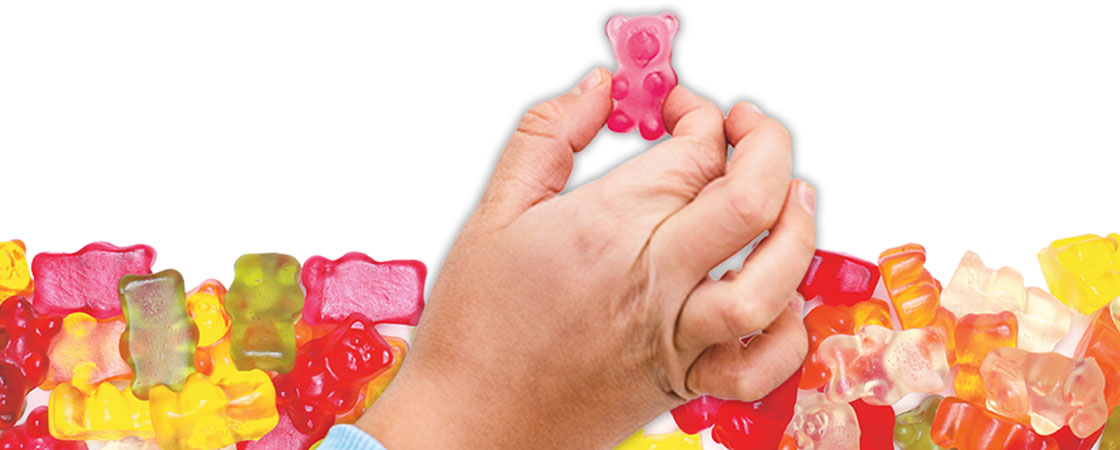Shutterstock.com
The World’s First Gummy Bear
These are some of the first gummy bears from 1922.
It was 1920 in Germany. A young man named Hans Riegel was working at a candy shop.
At the time, candy shops sold dozens of different kinds of treats. They had sticky yellow lemon drops and rock-hard suckers. They sold warm, oozing chocolates that melted in your cheeks. There were caramels so creamy they made your mouth water.
But Riegel had a dream. He wanted to invent something new. What could it be though? Was there really a kind of candy that nobody had tasted yet?
Riegel was sure there was. He quit his job and started a company in his tiny kitchen. Every day, he tinkered with new recipes. It was hard to think of something completely different. And then it came to him. What if he were to create a fruity candy that wasn’t hard and crunchy? What if he were to make a treat that was soft and chewy, like gum?
It took two years of experimenting to get the right texture. Some candies were too slimy—they fell apart as soon as he put them in his mouth. Others were so hard they nearly yanked out his teeth. But Riegel kept trying. At last, he created the perfect chewy treat. For his final touch, he shaped them like little bears. That’s how, in 1922, the gummy bear was born.
It was 1920 in Germany. Hans Riegel was a young man. He worked at a candy shop.
At the time, candy shops sold many kinds of sweets. They sold sticky yellow lemon drops. They sold rock-hard suckers. They had oozing chocolates. They sold creamy caramels.
But Riegel had a dream. He wanted to invent a new candy. But what could the new candy be? Was there really a kind of candy that nobody had tasted yet?
Riegel believed there was. He quit his job. And he started making candy in his kitchen. Every day, he tinkered with new recipes. But it was hard to think of something totally new. Then he had an idea. He would make a fruity candy. But his candy wouldn’t be hard and crunchy. He wanted it to be soft and chewy, like gum.
Riegel experimented for two years. He wanted to get the texture just right. Some candies were too slimy. They fell apart when he put them in his mouth. Other candies were too hard. They almost pulled out his teeth. But Riegel kept trying. He finally created the perfect chewy treat. He shaped the candies like little bears. And that’s how the gummy bear was born in 1922.

